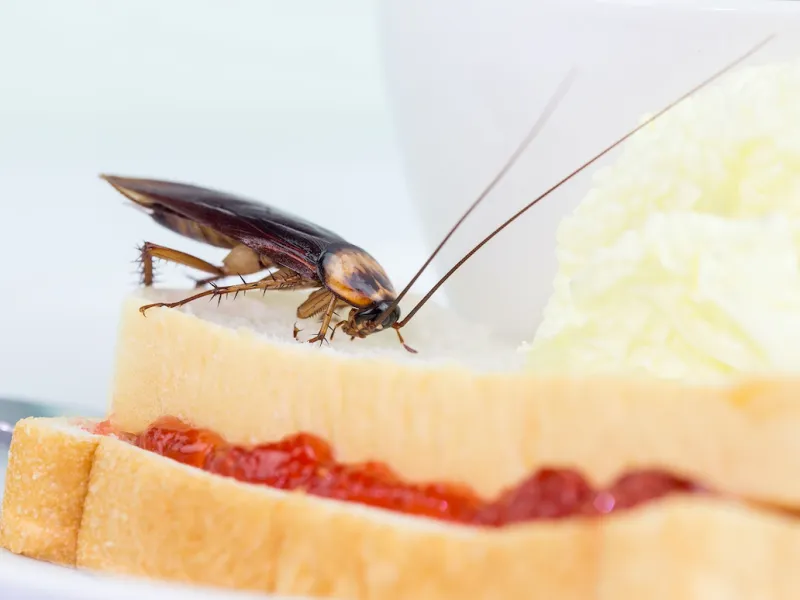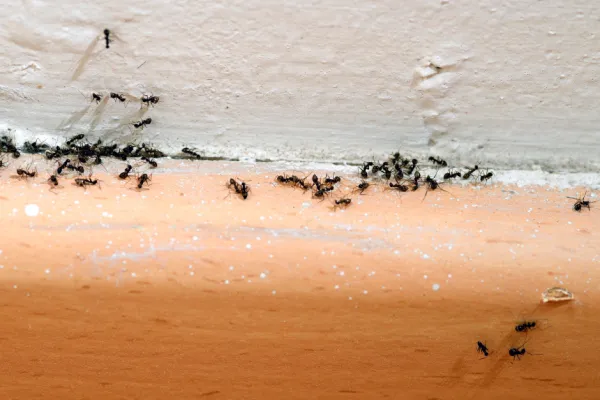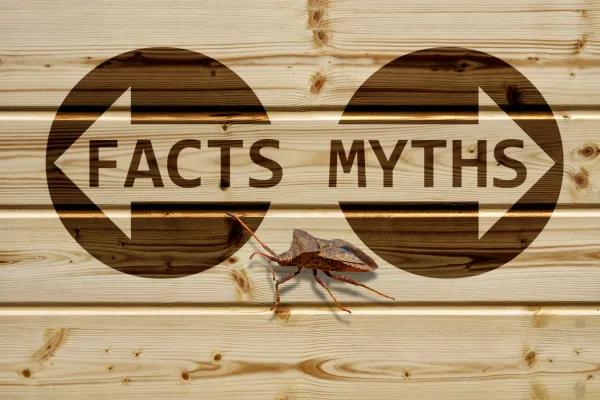Most Common Pantry Pests

Pantry pests tend to congregate around (and inside) stored food, such as rice, flour, and processed foods. Though the presence of these critters is less than ideal, it isn't exactly surprising. Many pests flock to homes for the same reasons we do - for water, shelter, and, of course, a delicious meal. While they aren't necessarily dangerous or damaging, pantry pests are bothersome, no doubt. Palmetto Exterminators is here to send unwanted pantry pests packing with these five simple steps!
How to Keep Unwelcome Critters Out of Your Pantry
1- Regularly Clean Up & Sweep
Though cleanliness helps to deter unwanted pests, even the most spotless kitchen is vulnerable. Still, when it comes to pest control, it is best practice to take the following precautions. Make sure to dispose of garbage and debris frequently. Avoid letting dishes pile up in the sink or around the home, as remnants of food and stagnant water can attract bugs. Place dirty utensils and dishes into the dishwasher as soon as you are finished using them or wash and dry them by hand. Make sure to stress the importance of cleaning up promptly to children who may leave used dishes in their rooms from time to time. And don't forget about Fido's dishes, which should be regularly washed and refilled as necessary.
Regularly sweep your kitchen and pantry floors to get rid of any crumbs lying around. Wipe down surfaces and cabinet interiors with a soapy sponge that will eliminate sticky residues. Should a spill occur, clean it up as soon as possible. Keep in mind that even though you might not see food remnants, pests are masterful at uncovering even trace amounts. With that in mind, you should give your cabinets, shelving, and pantry a thorough cleaning every three to five months.
2- Inspect Your Groceries & Check Expiration Dates
Where there is food, there are pests. Even before we bring food items into our homes, there are ample opportunities for pests to infest. Packaged food items must travel through processing plants, warehouses, and grocery stores. Always examine packaging carefully and avoid purchasing items that are damaged, dented, scratched, or torn. Remember, pests can invade through even the tiniest of holes. Wash all fruits and vegetables, which are more prone to carrying pests, when bringing them inside.
Make sure to frequently take stock of the items in your kitchen, checking the expiration dates as you go. If the packaging of any of these items looks as though it has been tampered with, toss it. The longer your food sits in the pantry, the more likely it is to attract pesky critters. That being said, is best to use the first-in, first-out rule when consuming food items.
Keep an eye out for overly ripe or decomposing produce, a delicacy for fruit flies, and dispose of any you may find in an outdoor trash can. This will prevent hundreds of fruit fly eggs (yuck!) from hatching inside your home. Putting out a sticky gnat trap or a mixture of apple cider vinegar and soap can help eliminate any flying adults. You may want to store these and other perishable products in the refrigerator, rather than in a bowl on your countertop, to reduce the likelihood of an infestation.
3- Properly Store All Food
Pantry pests are typically drawn to grains, cereals, spices, nuts, beans, and processed foods; however, they will happily snack on any foods available to them. Opened, unsealed packages are essentially a welcome sign inviting bugs to munch the food inside. Don't be fooled, though, bugs can usually get into unopened packaging, too. Always store food in airtight containers made of glass, metal, or strong, BPA-free plastics when possible.
If, during one of your pest inspections, you discover a critter in your groceries, immediately throw away the container in an outdoor trash can. Make sure to check any other foods in the vicinity for pests, as well. Pour some out on a plate or baking sheet to sift through it under a flashlight. If you don't come across any other pests, it was probably an isolated attack, but better safe than sorry. You can freeze the food items in question for a few days or bake at a low temperature for an hour or two to kill any eggs or insects. Should you stumble upon a cockroach, however, immediately remove all sources of food from the area to put stress on the population.
Remember, if you accidentally eat a bug or two, don't get worked up into a complete frenzy. Though the thought is rather unsettling, most pantry pests don't actually pose a health risk. However, it's best to avoid these altogether with regular pest inspections!
4- Use Pungent Pest Deterrents
It is important to avoid the use of dangerous toxins like bleach or ammonia in areas where food is stored. Not only are these chemicals potentially fatal if ingested, but they are futile in preventing a future infestation. To deter pests such as weevils and grain beetles, you can place small bags of black pepper, bay leaves, and talcum powder near entry points in your pantry or cabinet. These aromas are especially pungent and can be overpowering in your kitchen. Unfortunately, they aren't guaranteed to work. If you are dealing with hard to get rid of pests such as cockroaches, you will probably want to enlist the help of a professional exterminator.
5- Contact a Professional Exterminator
Though these proactive measures can help reduce the chances of an infestation, there is still the potential for one to occur. A licensed pest professional can help you identify and create a tailored treatment plan for common pantry pests such as ants, cockroaches, fruit flies, houseflies, earwigs, centipedes, silverfish, and spiders. Exterminators can also help you address other potential problem areas pests around your home, including damp spots, unsealed cracks or openings, and outdoor debris. For a no-obligation, free pest inspection of your home or business, contact Palmetto Exterminators today!


